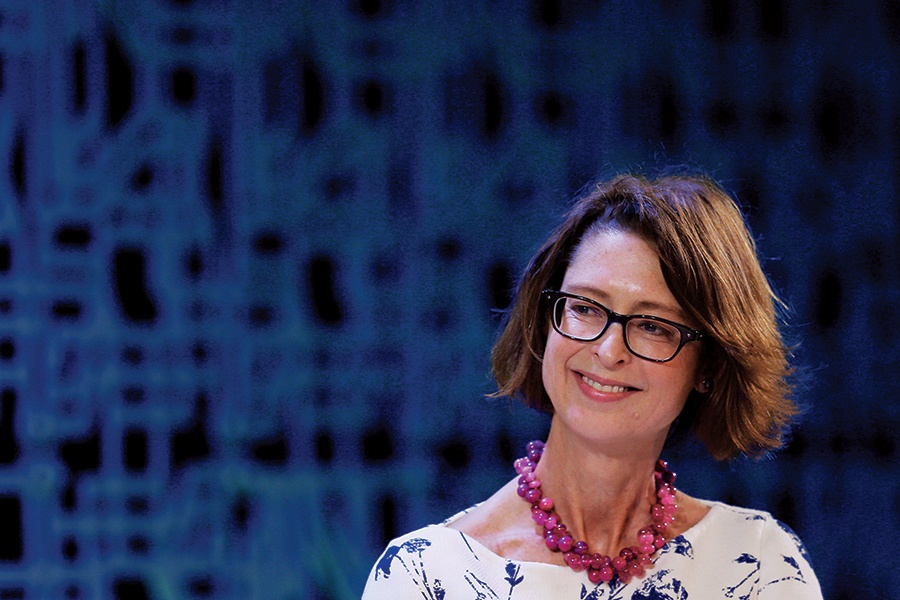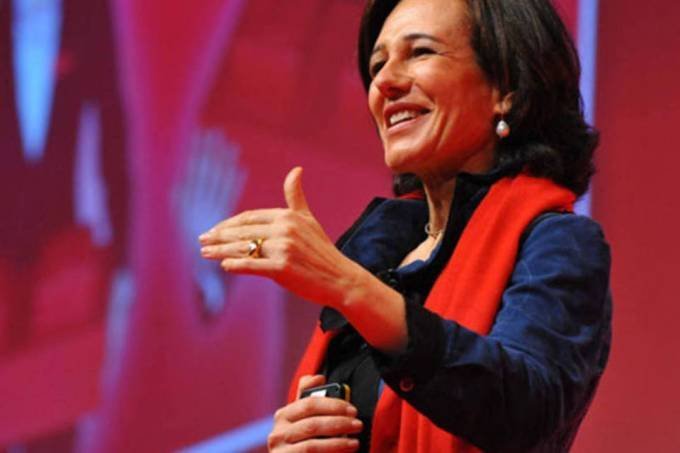How to Hire or Attract Female Leaders: Interview with our CEO Franziska

Q: Hello Franziska! You’re a female leader, please tell us your story!
Hi! My name is Franziska Palumbo-Seidel, and I’m the founder and CEO of Key Search.
I decided to launch Key Search after 12 years of experience working with tech companies, scale-ups, and venture capital firms. Just prior, I created KennedyFitchDigital, which can be considered the forerunner of Key Search.
A native of Germany, I’ve built up years of international experience. My years working in Executive Search and the Digital Economy have taken me to Switzerland, Monaco, Belgium, France, and Germany. I hold a Bachelor’s degree in International Business, as well as a Master’s degree in Human Resources Management from SKEMA Business School.
What's The Current Status Quo When It Comes To Female Leaders?
In the year 2021, there are still far too few female leaders. This isn’t because there aren’t enough working women out there, as females make up over half of the workforce. Nor is it because women aren’t willing and capable of putting in the work. So what’s the problem?
For one thing, the market for female leaders is not as large and encompassing as the one for men. Some countries have responded to this by putting regulations in place to support female leaders, but they aren’t typically effective.
Moreover, at a certain point in a woman’s career–usually just as she’s built up a strong resume–the work-life balance becomes harder and harder to maintain. Most of the time, she’ll be forced to choose between a demanding career and a family, which isn’t an easy task. It gets even trickier if the company in particular and the country in general don’t provide enough support to allow her to do both.
It also doesn’t help that society places most of the parental burden on the mother. If there’s a problem at school, the teachers and administrators are more likely to call the student’s mother, even if the father is less busy and more accessible. These prejudices are deep and ingrained, and it will take more than just time to change them.
Contents
What's Changed In The Last 20 Years
It’s been more than 20 years since the turn of the millennium. Surely we’ve made some great strides when it comes to equality during that time, right?
Unfortunately, the answer is no. The gap between male and female leaders is still a sizable one, especially in the old economy.
Some European countries—Germany and the Nordic region, for example—are attempting to bridge this gap by offering generous paid leave for new parents and birth mothers in particular. They’re also making the effort to provide more daycare opportunities, which would make it easier for working moms to return to the office.
Still, the workforce remains focused on male leadership, despite the fact that women are the primary or lone wage-earners in 40 percent of US households. Full-time female workers earn about 79 cents for every dollar that their male counterparts do. Even more shocking: Women hold only 24 percent of the senior leadership positions around the globe.
There’s also no denying the fact that male leaders still dominate in world politics. In the US, the 2020 election of President Joe Biden gave the country its first-ever female vice president. While that represents a definite step forward, it’s one that’s long overdue.
What’s more, Vice President Kamala Harris is still only the second in command. That’s not surprising—as of 2020, there were only 20 female heads of state in the entire world.
The numbers aren’t much more encouraging at the local level. 64 percent of the elected seats in local government are still held by men. If you look toward national parliaments, the male majority creeps up to a whopping 75 percent.
Why Female Leaders Are Vital For Modern Companies
Some might argue that it doesn’t matter whether a leader is male or female, just as long as they get the job done. And in a sense, that’s true. Women don’t necessarily have different leadership styles than their male colleagues—but some might, and many corporations could benefit from what they have to offer.
In general, women tend to focus more on cooperation than command, particularly when it comes to communication. While a male leader might say “Do it this way,” a female leader might encourage the worker to perform the task in whatever manner they see fit. There’s merit to both styles—the democratic approach won’t work as well in potentially hazardous situations, for example—but employees are bound to feel more valued if they’re given a voice of their own.
Women are also less likely to trumpet their own achievements. Although modesty is a valuable trait in social situations, it isn’t as desirable in a professional setting. It can be difficult to discern what the leader is capable of if they don’t speak up, which may be part of the reason why men are likely to climb higher in a shorter period of time.
Statistically, there’s no proof that male leaders outperform their female counterparts. In fact, data suggests that most workers would prefer to have a woman leading their team. Women are more likely to display self-control, kindness, and humility in the workplace, whereas men have a reputation for being more self-absorbed and egotistical.
The tech industry represents an interesting conundrum when it comes to male vs. female leadership. 28 percent of the tech leadership positions in the US are filled by women, which is a shockingly low level of representation.
Yet studies show that the firms in which 30 percent of the leaders are female have a net profit margin much higher than those with all-male leaders. In addition, the women in these positions were just as ambitious as the men. 62 percent of the women interviewed claimed that they were currently vying for a promotion, which is about on par with the 67 percent of men who claimed the same thing.
If women are just as capable and ambitious, and if the employees would be happier with a woman in charge, what’s to prevent companies from hiring more female leaders? The truth is, most companies don’t select leaders on the basis of competence and potential. That’s what needs to change.
Favourite Female Leaders
You don’t have to look far to find an example of a great female leader. Oprah Winfrey used her status as a talk-show host to build an entire brand around her strong persona. Greta Thunberg has drawn attention to the climate change crisis merely by making her young voice heard. And Melinda French Gates co-founded one of the largest private charitable organizations in the world.
These are famous examples, of course, but they aren’t the only ones. Let’s take a look at some of the other female leaders in the current workforce.
Julie Sweet
As CEO of Accenture, a leading professional services company with a global following, Julie Sweet is a role model for female leaders. According to the New York Times, Sweet is “one of the most powerful women in corporate America.” In September 2021, she took over the chairing duties for Accenture as well.

Abigail Johnson
Since Abigail Johnson took over as CEO of Fidelity Investments in 2014, the company has shown no signs of slowing down. As the granddaughter of founder Edward Johnson II, she’s determined to keep the family business going strong.

Mary Barra
In 2014, When Mary Barra became chair and CEO of General Motors, she also became the first female CEO of a “Big Three” automaker. Although GM is no slouch in the technology department, Barra is just as committed to sustaining the company’s reputation for outstanding customer service.

Ana Patricia Botin
Ana Patricia Botin is another example of a female leader who took the reins of a family business in the year 2014. A successful banker in her own right, she’s the fourth generation to serve as executive chairman of the Santandar Group since the company was founded.

Bethenny Frankel
You might know the name from the Bravo series The Real Housewives of New York City, but there’s more to Frankel than mere television stardom. She’s also an author and philanthropist, and the founder and CEO of Skinnygirl, a brand whose aim is to provide lifestyle advice to ambitious women.

Cynthia Marshall
After more than three decades at AT&T, Cynthia Marshall made waves when she was appointed CEO of the Dallas Mavericks. The first African-American female to head up an NBA team, Marshall is a poster child for diversity and inclusive business practices.

Kathrin Jansen
Pfizer’s Head of Vaccine Research and Development had a busy year in 2020. Kathrin Jansen, the current holder of this position, was instrumental in developing the company’s COVID-19 vaccine, which was approved for Emergency Use Authorization in December of that year.
Maria Eitel
Maria Eitel isn’t just the CEO of the Nike Foundation, she’s its founding president. As such, she not only embraces but embodies the company’s motto: Just Do It.

Indra Nooyi
Through a long career at PepsiCo which culminated in a 12-year stint as CEO, Indra Nooyi managed to restructure the well-known brand while balancing her home life as the mother of two. Since leaving the company, she’s decided to use her considerable clout to help tackle the child care crisis.

Sjoukje Zaal
You might not recognize the name, but you should know the company right away: Sjoukje Zaal is the Chief Technical Officer at Microsoft. She’s also the author of several books, all on the subject of technology.

Female Leaders In Startups
Whitney Wolfe Herd
Being an executive at Tinder evidently wasn’t enough for Whitney Wolfe Herd. This up-and-comer founded Bumble, a dating app that encourages women to take the reins, when she was just 25 years old. She was also instrumental in the funding of Chappy, which is a UK-based dating app geared toward gay individuals.

Ida Tin
Clue, a female health app that allows women to track their menstrual cycles, was co-founded by Ida Tin. Today, the app has over 12 million active users worldwide.

Natalia Panowicz
As the CEO at Codility, Natalia Panowicz demolishes any stereotypes about women being out of place in the tech world. This technical recruiting platform is designed to help employers make hiring decisions based on hard evidence, which should usher in more female leaders in the years to come.

Why Are Female Leaders Hard To Hire?
Given everything we’ve learned, it shouldn’t be difficult to attract and hire women for leadership roles. After all, the evidence suggests that it could be good for business on several different levels. So why is it still so hard?
One of the main reasons is that there simply aren’t as many female leaders in the pool. The business world is still male-dominated, despite the progress we’ve made. As a result, you can’t apply the same tactics you would use to attract male leaders—as in, “let’s see if we can lure X away from the competition.” Most women who have managed to move to the top office have done so after putting in many years with the company.
What can we do to change the situation? First of all, it’s vital to connect with networks that already include a high percentage of successful women. The strongest leaders rely on their connections to get things done. Because some women still shy away from networking, believing it to be a manipulative tactic, it’s up to employers to take the reins and prove that there’s no harm in building strong relationships within the industry.
Additionally, you can directly address the challenges that women struggle with. Coaching and mentoring programs, as well as direct guidance for work-based learning, are all good places to begin. Be clear about what’s expected from leaders in your company, and offer workers a chance to live up to those expectations.
If you want to dig deeper, try to root out any unintentional bias within the organization. Ask yourself if there are any regulations in place that could be affecting a woman’s opportunity to rise higher, and focus on removing them. Foster a workplace culture that encourages all workers to speak up against business practices that they see as unfair, regardless of gender.
How does Key Search Manage To Hire Female Leaders?
Even as we acknowledge that it can be tough for companies to hire female leaders, here at Key Search we’re doing our part to close the gender gap.
For starters, our network connects us with a number of other companies and leaders around the world. This makes it easier to seek out up-and-comers, or any workers who have the potential to reach a little higher.
Technology also plays a fundamental role in what we do. Our proprietary data and insights tools allow us to screen the talent market, using gender-balanced short lists to find suitable candidates. Without this technology, it would be difficult to track the number of female applicants we received.
Our recruiters are specifically trained to determine whether the applicant’s mindset and skill set are suitable for C-level positions. It’s not all about male vs. female, although as we mentioned, we do strive to create a gender-balanced roster. If there’s a female candidate who appears qualified for the role, we will be sure to seek her out. Since many industries are still male-dominated, it’s important not to lose ground in this area.
We’ve found that our clients are trying to stay ahead of this curve as well. About 30 percent of the time, a client will proactively ask us to hire a female leader for a project, if there’s a viable candidate available. As such, it’s in our best interests to maintain a gender-balanced list.
Your Message To Female Leaders
If you’re a strong-willed woman who has worked hard to build stellar leadership and communication skills, we would love to have you join our network. There are plenty of companies out there seeking female leaders to head up their teams. Get in touch today, and we can work on getting you settled in the C-level role that you deserve.

